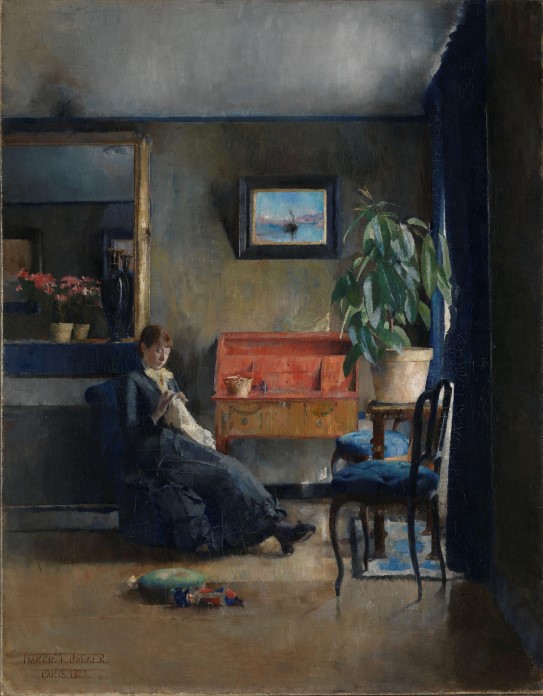Blue Interior
Harriet Backer
Transcription
Narrator
Blue interior is in many ways, Harriet Backer's artistic breakthrough.
Interiors were Backer's preferred motif – they were ideal for her studies in the effects of light and colour. She could work indoors, undisturbed, in comfortable surroundings, and with relatively predictable light effects. Her studio became whatever room she was painting at any given time.
Here, in Blue Interior, we see a young woman in a living room.
The woman was her friend and colleague Asta Nørregaard
It was while Backer was in Paris that she began to explore lighting conditions and colour effects, exploring how to render a contrast between indoor and outdoor light. And also, how colours are perceived differently in lamplight versus daylight.
Actor portraying Harriet Backer
In my experience, being occupied with the study of light and the painstaking effort of drawing is inspiring and helps one to discover colour....the spots of colour appear in fixed constellations, as the stars in the heavens lie beckoning to each other.
Narrator:
The title, Blue Interior, not only refers to the blue furniture and curtains, but also the woman's dress, and the shadows' absorption of the blue throughout the composition. This in turn creates a calmness that characterizes the composition.
The blue, gray and green elements keep everything in a cool tone, and it is weighted by warm elements such as the red azalea on the mantelpiece, the warm brown-red box and not least in the toy lying on the floor next to the footstool.
Backer had painted several historical interiors with common features such as the ones seen here, where the light enters the room at an angle. For example, in her painting Fourre Tout, located next to Blue Interior, we see a storage room with a model where the natural light also enters from the right.
Backer was inspired by her time in France - the French plein air (or outdoor) painting, and the Impressionism movement - and she altered her painting style, moving towards the period’s more realistic motifs featuring everyday life.